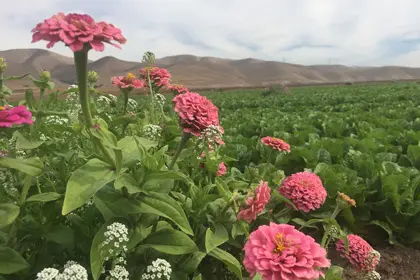
Growing the Organic Market
More and more of our customers are transitioning acres to organic, some just a few acres, others, many more. The organic market continues to grow at close to 10% each year. Consumers are asking for food that has been grown organically, even if they don’t fully comprehend what that means. Supermarkets and distributors are trying to fill those demands and putting pressure on our customers to provide organic crops and produce. Regardless of our personal opinions on organic production, this is an important business decision for our customers; once they make the decision to transition acres to organic, we need to be their biggest supporter.
 Overall, the number of acres approved for organic production is still very small, but it is a growing segment of our business. We are walking acres that are organic, making recommendations for crops on organic ground, storing organic products in our branches and, in some cases, making applications in fields that are organic. Each of these actions needs to be done with care to ensure we don’t jeopardize your customer’s organic status.
Overall, the number of acres approved for organic production is still very small, but it is a growing segment of our business. We are walking acres that are organic, making recommendations for crops on organic ground, storing organic products in our branches and, in some cases, making applications in fields that are organic. Each of these actions needs to be done with care to ensure we don’t jeopardize your customer’s organic status.
Gina Colfer and Mike Almasri highlight two common problems for continued organic certification which can be easily avoided with our help.
“Make sure the products being recommended are on the grower’s Materials List that is submitted to their certifier.” – Gina Colfer
“Always double check that the products you are recommending are organically certified with the entity (OMRI, CDFA or WSDA) that is recognized by the grower’s certifier. Additionally, always double check that a product is registered in the state where it is intended to be used.” – Mike Almasri
As with any product, make sure to read and follow the label. We can be proactive and make sure all products we may recommend in the coming growing season are listed with the appropriate entity and that they are on the Materials Lists as part of the grower’s Organic System Plan (OSP).
The Guide for Managing Organic Products outlines protocols and gives guidance for handling, storing and transporting organic products at the branch level and in the field. Rinse and Clean Out Procedure gives guidance for creating a Standard Operating Procedure (SOP) for cleaning out all spray equipment prior to using it on the organic ground. There are two important components to cleaning application equipment used for both conventional and organic ground. One, make sure there is a written protocol for the branch and, two, that there is written documentation that the protocol was followed for each clean out.
It is important to remember that 60-80% of the products approved for organic production are applied to conventional crops. A branch could stock organic product and not call on any organic acres. However, those products need to be treated as though they were going out to an organic field, including how it is stored to prevent future mistakes from happening.
Farming with organic methods and inputs is a challenging opportunity agronomically. These newsletters will cover specific challenges in the coming months.

